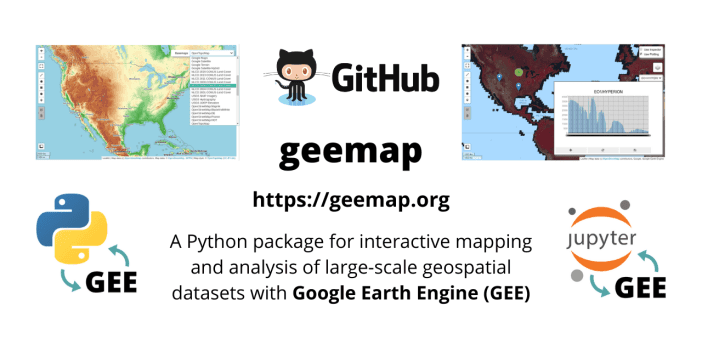The geemap package is built upon ipyleaflet and ipywidgets, and enables users to analyze and visualize Google Earth Engine datasets interactively within a Jupyter-based environment.
Archive: Google-earth-engine
- Here is a huge catalog of community-sourced free geospatial datasets made available for use by the larger Google Earth Engine community and shared publicly as Earth Engine assets.
- Here is a simple web application that allows searching for Google Earth Engine apps by their location, filtering by zoom level and opening the apps in the browser.
- This course covers the full range of topics in Earth Engine to give the participants practical skills to master the platform and implement their remote sensing projects.
- As you upload more and more assets to Google Earth Engine, managing this data becomes quite a cumbersome task. This blog post demonstrates using Python to help with some common data management tasks.
- The eemont package extends the Google Earth Engine Python API with pre-processing and processing tools for the most used satellite platforms by adding utility methods for Earth Engine Objects.
- Check here for a huge list of Google Earth Engine resources (getting started, APIs, free courses, presentations, videos, datasets, and more).
- Add custom basemaps from Snazzy Maps to your Google Earth Engine application or notebook with a couple lines of code. Run a demo in the code editor here.
- Here is a collection of Jupyter notebooks for learning Google Earth Engine Python API and geemap, assembled by geemap's author, Dr. Qiusheng Wu.
- Easystac is a Python package that provides users of STAC objects as well as clients from Planetary Computer and Radiant ML Hub with an API to query, explore and convert STAC assets to xarray objects.
